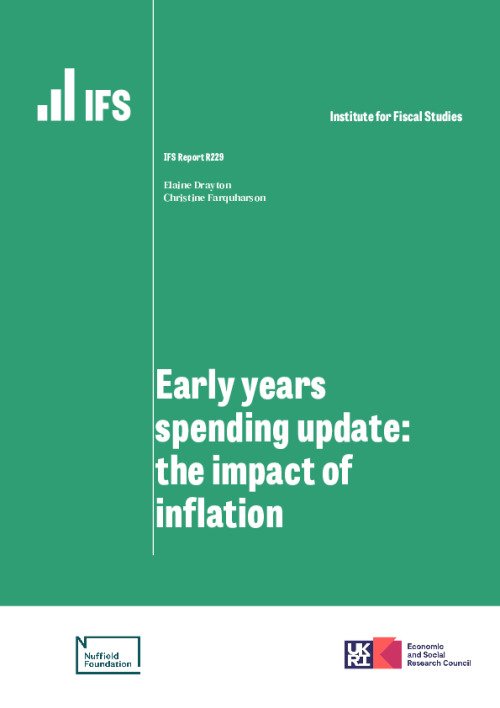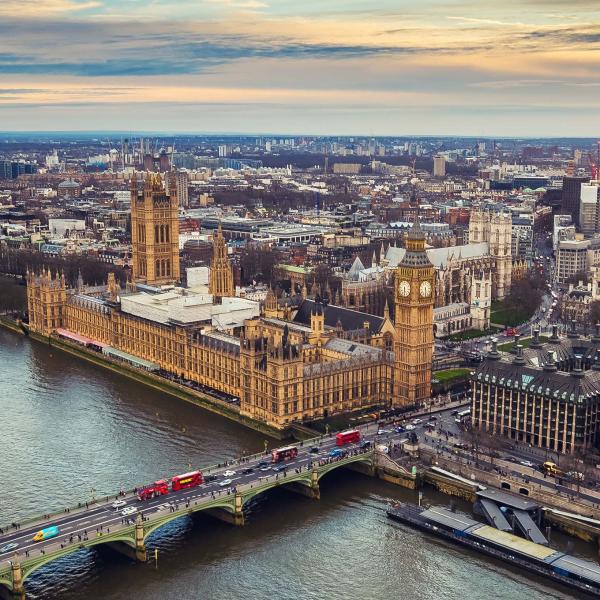With the COVID-19 lockdowns and the ongoing cost-of-living crisis, the importance of the early years system for children and their parents has been made particularly obvious over the last few years. In this report, we analyse how public spending on early childhood education and care has changed over the last two decades.
Overall spending on the early years in England has grown from around £1.5 billion in 2001–02 to more than £5.3 billion last year (all figures in today’s prices). But within this growing envelope, the relative amount of spending on the different childcare programmes has changed dramatically. The ‘free entitlement’ to funded childcare hours – for all 3- and 4-year-olds and some 2-year-olds – has seen its budget grow substantially, while spending on childcare subsidies through the working-age benefit system has been cut.
Spending has been on a bumpy path for the last few years, with slight falls in free entitlement spending and a significant fall in spending through the tax and benefit systems during the COVID-19 pandemic. More recently, the main pressure on early years spending has been rising prices, which on average have risen more quickly for childcare providers than for either households or the economy as a whole. Going forward, high levels of inflation mean that even substantial cash-terms increases in the early years core funding rate will struggle to keep up with providers’ rising costs.
Key findings
1. Overall spending on the early years in England has grown substantially over the past 20 years, from around £1.5 billion in 2001–02 to more than £5.3 billion last year (all figures in today’s prices). The growth in spending over the last decade has been entirely driven by the free entitlement to a funded childcare place, which has seen its budget rise from £1.7 billion in 2009–10 to over £4 billion last year.
2. While spending per hour has increased somewhat over this period – in 2021–22 it was about 28% higher in real terms than it was in 2009–10 – the bulk of the increase in free entitlement spending has been driven by the addition of new entitlements, for disadvantaged 2-year-olds and for 3- and 4-year-olds in working families.
3. Economy-wide measures of inflation have recently understated the cost pressures facing childcare providers. With many workers earning at or near the minimum wage – and a high share of costs going towards staffing – recent rises in the National Living Wage have pushed up costs. Last year (2021–22), prices facing childcare providers were 11% higher than they had been three years earlier, before the pandemic. By comparison, over the same period, consumer prices had risen by 7%, while the prices in the economy as a whole had risen 9%.
4. The prices facing childcare providers are set to grow even more quickly over the next few years. We estimate that providers’ costs will grow by 16% between 2021–22 and 2024–25. Over the same period, recent forecasts suggest that economy-wide inflation (as measured by the GDP deflator) will be around 14%.
5. Higher-than-expected inflation has eroded the value of the uplift to the free entitlement budget announced at the 2021 Spending Review (worth £500 million over three years). Based on the inflation forecasts that were in place at the time, this settlement would have kept total resources in 2024–25 around 2% lower than they were in 2021–22. But more recent forecasts for the GDP deflator suggest total real-terms funding for the free entitlement will be 8% lower in 2024–25 than it was in 2021–22, and the cut will be 9% if measured against the prices facing childcare providers.
6. A falling population of 2- to 4-year-olds helps to offset some of the pressure on the free entitlement budget. Indeed, at the time of the 2021 Spending Review, the budget uplift agreed would have allowed the Department for Education to raise the core hourly funding rate in real terms in 2023–24. Higher inflation forecasts make that more difficult: under our illustrative scenario, today’s core funding rate of £5.06 an hour for 3- and 4-year-olds will fall by 10p in real terms by 2024–25 (in today’s prices as measured by the GDP deflator), or by 14p an hour when compared against our index of childcare providers’ prices.
7. While free entitlement spending has risen, spending on childcare subsidies through the working-age benefit system fell from £1.8 billion in 2009–10 to £640 million in 2021–22. This was partly due to a sharp fall in spending during the pandemic, with spending falling from £900 million in 2019–20 to £620 million the following year as childcare use declined. But most of the decline in benefit system spending since 2009 predates the pandemic, with a longer-term trend of falling spending through the benefit system, linked to less generous payments, a squeeze on caseloads and, more recently, the transition to universal credit.












